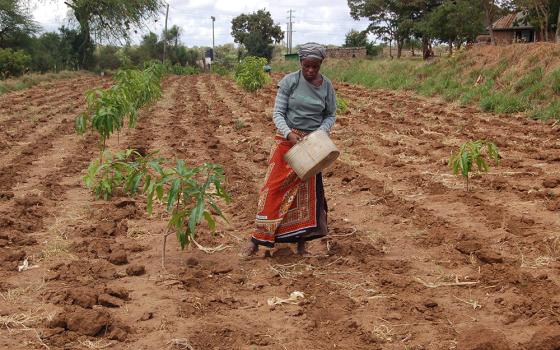DURBAN, SOUTH AFRICA — Three years ago a claim in the Fourth Assessment Report of the Intergovernmental Panel on Climate Change - stating that glaciers in the Himalayas were receding faster than in any other part of the globe and could disappear completely by 2035 – was seized upon by climate deniers as an example of the questionable science behind climate change. The claim was made by an Indian glaciologist in a June 1999 article in New Science magazine. The data had not been peer-reviewed.
The story behind this mistake received extensive coverage in news media across the globe. Many people, who were beginning to take the science of climate change seriously, reverted into a sceptic mode. Pressure was brought on Rajendra Pachauri, the chairperson of the IPCC, to resign.
The Impact of Climate Change on the Himalayas and Tibetan Plateau
While the 54,000 glaciers covering an area of over 60,000 square kilometers (23,400 square miles) in the Himalayas may not disappear in 35 years, they are under serious threat that will only get worse if politicians here in Durban fail to deal effectively with greenhouse gas emissions.
The tragedy is that, despite a greater knowledge of the dangers of climate change and considerable efforts to invest in non-fossil fuel energy sources, little has been achieved.
Somewhat depressing data has emerged in a recent study conducted by the Tyndall Centre for Climate Change, based at the University of East Anglia. Professor Corinne Le Quéré, the Centre’s director, estimates that fossil fuel emissions rose by 3.1 percent globally since the Kyoto Protocol was negotiated in 1997.
In 2010, for example, fossil fuel emissions rose by 5.9 percent. The study predicts unless real changes are put in place, greenhouse gas emissions will grow by 3 percent over the next few years.
One of the most depressing elements in the data, according to Julia Steinberger, a lecturer in ecological economics at the Sustainable Research Institute at the University of Leeds, is that emissions do not seem to decrease much, even during a recession.
“The worst economic crisis in decades was apparently a mere hiccup in terms of carbon emissions,” she told the London-based Guardian newspaper.
Le Quéré warned that it was necessary to urgently do something about the 80 percent of our energy that still comes from burning fossil fuel. Unless this is tackled urgently, there is little hope of holding global temperature rise to less than 2 degrees Celsius. Any increase beyond that will result in catastrophic and irreversible climate change. Most frightening of all, given the slow pace of the negotiations here at Durban, is the judgement of these scientists that emissions need to peak by 2020 at the latest.
This, of course, brings us back to the Himalayas. A Swedish-funded study by the International Centre for Integrated Mountain Development, in Katmandu, Nepal, found a doubling of ice and snow lost in the 10 glaciers they have studied the past 30 years. The report claimed that there was a shrinking in both the central and eastern Himalayas.
It seems that glacial erosion has increased in recent years. The study found that there was a depletion of 22 percent in the Bhutan glaciers and 21 percent in Nepal. The loss of volume was even greater in the higher altitude central Himalayas and on the Tibetan Plateau. In the iconic area around Mount Everest the data showed a marked loss in glacial mass between 2002 and 2005. One of the reasons for this rapid loss of glaciers is that the temperature rise in the Himalayas has been significantly above the global average of 0.74 C over the past 100 years.
Serious depletion of ice and snow from the Himalayas and the Tibetan Plateau will have devastating consequences for people in Asia. Many of the great rivers in Asia – the Indus, Ganges, Brahmaputra, Salween, Mekong, Yangtze and Yellow – begin in the Himalayas or the Tibetan Plateau. A major reduction in the volume of ice and snow on these mountains will mean that there will be much less water available for drinking, personal hygiene and agriculture to the almost 2.5 billion people who depend on these rivers.
In today’s Eco – the daily news report from the Climate Action Network – there is a letter addressed to the ministers arriving for the final few days of negotiations.
It begins, “The disconnect between the climate talks and the scientific reality is stark. In the UNFCCC process, progress is being made, but in real life your negotiators have been sleepwalking as the world burns.”
I think this quotation captures what most of us feel about the slow pace of the negotiations at this point. One ray of hope was an announcement from Beijing that China would put limits on its emissions – the world’s largest – as early as 2020. Until now, China has only measured its emissions in terms of energy intensity per unit of gross domestic product.
Although Japan has said it would not join the European Union in renewing the Kyoto Protocol, its climate envoy Masahiko Horie said he wanted to start discussions and adopt, as soon as possible, a comprehensive international agreement that would involve all major economies.
Fr. Seán McDonagh is in Durban, South Africa, reporting on the UN Climate Change Conference 2011. He will be providing updates throughout the conference.




